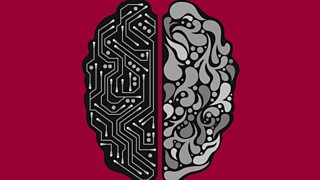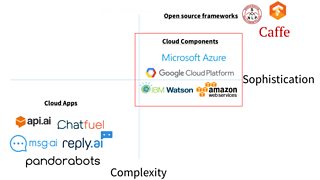According to one dictionary the word of the year is ‘fake news’. That’s not actually a word, so maybe I can suggest another which is also not really a word: AI.
AI seems to be everywhere, but what do we mean by it? Is it the recommendation on your iPlayer homepage? Is it how your new digital assistant can listen to your instruction and respond with a human sounding voice? Is what’s inside a self-driving car? The answer is all of the above. And this is just the beginning.

At the BBC, AI looks set to change many aspects of the business. Whether it’s looking at new ways of enabling audiences to gain access to content by organising our data better or innovative ways of interacting with content on the new digital devices, the BBC is actively exploring the practical application and potential of the technology. In the coming months and years, AI systems are likely to become part of the working lives of more and more people at the BBC.
Before AI had started to become mainstream, I helped a team at the BBC to create a system to analyse vast quantities of media broadcast across the world. Building a machine that could watch, read and listen to news content in nearly any language without a break turned out to be too ambitious for the technology at the time but today this would be far more attainable.
One of the hottest parts of the AI field is machine learning - which is when an algorithm can improve its performance by adjusting to feedback, either from a user or from other sources of data. There’s a great example of this in the 2013 Spike Jonze movie Her, where the protagonist, Theodore, is introduced to his new AI assistant which (who?) elegantly explains that it learns from its experiences. The assistant then asks Theodore whether a joke it told was funny. This simple demonstration of a machine learning what is considered funny is then applied to decisions about which emails to keep and which to bin. It’s uncanny just how on-point that movie was when AI technology would only become mainstream a few years later.
With its close association with science fiction, AI might appear to be well outside the working lives of most of us. But I’ve been finding out that’s not the case. As a product manager at LexisNexis, I’ve been exploring the possibility of using AI to understand the rules of the UK tax system. Given that Albert Einstein famously declared that “the hardest thing in the world to understand is income taxes”, I didn’t expect to solve this overnight. But my journey in trying to answer the question has helped me see the world of AI in a new perspective.
First of all, if you want to employ an AI system, to what extent do you have to build it yourself? Well, it turns out that, just like in other areas, there’s a range of options from ‘off the shelf’ to fully customised.
To be specific, the choices fall into three categories: apps, components and frameworks.

The most ‘off the shelf’ category are the AI apps. These require no coding and are usually designed with a specific purpose in mind, such as customer service or e-commerce. The most common way to interact with them is through a chatbot. While they’re quick and easy to set up, you don’t get as much flexibility or control over how and where they can be used.
The AI components category is dominated by household names in cloud technologies such as Amazon and Google. They’ve been developing their online platforms to enable developers to leverage the power of AI in existing or new applications without the overhead of developing tools and algorithms from a standing start. Think of it as Lego blocks that can be pieced together in many different ways to create different things.
The third category are AI frameworks. Many of these are open-source but using them requires serious technical expertise. They’re needed for high level research or to develop AI components. A couple of years ago, most of AI looked like these frameworks but fortunately things have moved on.
As an example of a simple use of AI, I’ve put together a demo (below) that’s designed to learn how to answer questions about the BBC journalism trainee scheme. (The video is mute.)
The video shows how the engine is given training data in a series of questions and answers, which once understood, can be used to answer new questions, using Natural Language Processing. This is a subset of AI in which a machine can infer the intent behind a question rather than simply programming it with a large set of possible variations. In our example, the AI can answer the question “I live abroad - can I apply?” but when I ask a variation of the same question “Can overseas students apply?” it still recognises the question and gives the same answer.
Don’t be surprised if AI becomes part of your working life in 2018. And if you don’t think you’re going to be able to deal with it, don’t worry: there’s probably a friendly AI program out there waiting to teach you.
What is AI? (BBC staff only)
AI and news (BBC staff only)
